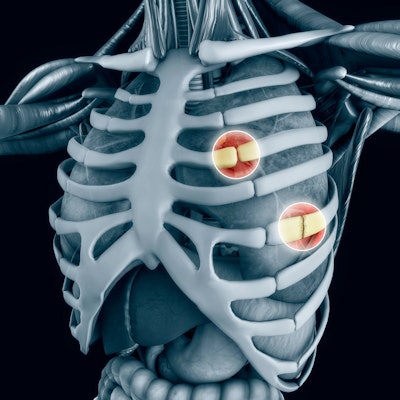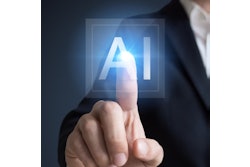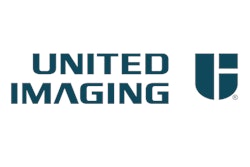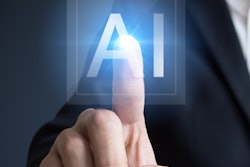
An artificial intelligence (AI) algorithm can give radiologists a boost in performance for detecting and classifying rib fractures on CT exams, according to research published February 18 in Skeletal Radiology.
Researchers led by Dr. Xiang Hong Meng of Tianjin Hospital in Tianjin, China, trained a deep-learning model on over 8,000 chest CT studies. In testing, they found that the algorithm significantly increased the diagnostic performance of two junior radiologists and sharply reduced their interpretation times.
"It is highly desirable to apply the rib fracture diagnostic system in daily clinical and screening practice," the authors wrote.
CT exams can be sensitive for finding rib fractures and assessing for lung injury. However, the number of ribs, shape variations, and confounding structures can make it difficult for radiologists -- especially junior radiologists -- to accurately locate and classify rib fractures, according to Meng and co-authors from Tianjin Hospital and AI software developer United Imaging Intelligence.
They trained their deep-learning model -- a cascaded feature pyramid network and a classification network -- on 8,529 chest CT scans from multiple hospitals in China.
After performing rib segmentation and vertebrae detection, the algorithm then labels ribs, detects fractures, and in the final step, classifies the fractures as one of four types: displaced, nondisplaced, buckle, and old fractures.
To assess the clinical impact of the algorithm, the researchers tested the performance of two junior radiologists in a separate set of 300 chest CT studies. These junior radiologists, who had less than five years of experience in musculoskeletal imaging, detected and classified the rib fractures first without and then with help from the algorithm. The CT exams in the test set included 299 displaced, 186 nondisplaced fractures, 248 buckle, and 128 old rib fractures.
| Performance for detecting and classifying rib fractures on chest CT | |||
| Radiologists without AI (mean) | AI algorithm | Radiologists with AI (mean) | |
| Detection recall | 81.2% | 92.2% | 93.9% |
| Fracture classification accuracy | 85% | 86.3% | 89.3% |
The improved detection and classification accuracy for the junior radiologists was statistically significant. Although the algorithm wasn't helpful to radiologists in classifying old fractures, it was beneficial in classifying the other three types of rib fractures, according to the researchers.
What's more, the radiologists' average reading time declined from an average of 158.3 seconds to 42.3 seconds after using AI. The model took an average of 4.9 seconds to analyze the images.
The authors noted that advanced visualization techniques such as curved planar reconstruction or volume rendering could be combined in the future with the deep-learning model to improve rib fracture detection accuracy. They said they also now intend to collect more CT images, including those of nondisplaced and buckle fractures, to expand the training set and further improve classification performance.
In other future work, Meng and colleagues plan to explore the utility of the deep-learning model for identifying other chest injuries on CT -- a significant potential benefit in assessing patients with thoracic trauma.
"Moreover, we will collect more testing datasets from multiple hospitals, especially for the CT images of patients with poor breath holding or with severe respiratory artifacts," they wrote.





















